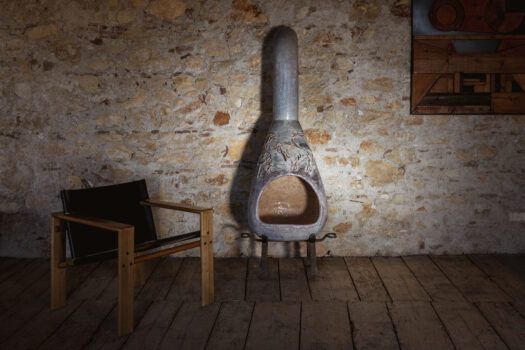It would be an understatement to say that renowned French Impressionist artist Edgar Degas (1834–1917) was preoccupied with the ballet dancers of the Paris Opera. He made nearly 1,500 images of them over the course of his career, returning regularly to the Opera to sketch the ballerinas in charcoal and transforming the drawings into paintings in his studio.
But in the late 1890s, different performers caught his eye — Ukrainian folk dancers. With their billowing white blouses, flowing skirts and streaming hair ribbons, they gave Degas an exhilarating new challenge when it came to depicting movement — one of his primary artistic missions. In 1899, he produced a series of 18 works on paper, including 6 finished pastels, showing the women in their traditional garb.
One of the most complex and eye-catching of the six — fully developed, with an incredibly textured surface, radiant hues and a wonderfully lyrical composition — is currently available on 1stDibs through New Orleans fine art and antiques gallery M.S. Rau, which is offering the work on behalf of a private collector for $19.5 million.

The piece has been held in private collections and loaned on occasion to major museums, including the Royal Academy of Arts in London and the Getty Museum in Los Angeles. This summer there’s a rare opportunity to view it in person at M.S. Rau’s Aspen, Colorado, pop-up, open through September. “It’s one of the most important works of art by one of the most important artists, in perfect condition,” says the gallery’s president, Bill Rau. “That’s the holy grail.”
The Ukrainians, with their vivacious choreography and exuberant, colorful garments, seem to have offered Degas a joyous counterpoint to the more rigid ballet dancers. It bears noting that the ballerinas were often young girls from indigent families sent to the opera to learn a trade (which notoriously included enduring the advances of male suitors waiting for them backstage, as Degas often depicted).
Interest in Russian culture had swelled in late 19th-century Paris, thanks to the alliance that formed between Russia and France in the wake of the Franco-Prussian War. Degas, a devotee of Paris’s cultural delights, probably encountered the Ukrainian dancers in the city’s cabarets. (At the time, Ukraine was part of the Russian Empire, and the series was long referred to as “Russian Dancers.”)

With these new subjects, Degas explored a warmer palette than the cool greens and blues of his ballet pictures. He was nearly blind by the time he portrayed the lively Slavic scenes, and his surfaces had become increasingly soft and blurred — more Impressionistic, one might say. The contrast of the white blouses against the dark orange skirts may have appealed to him as his vision declined. He had severe light sensitivity, as well, so the outdoor setting is likely a fantasy.
Although the pastoral subject matter feels less modern than the artist’s more obvious Parisian themes, the work is classic Degas, from his grouping of the dancers in a trio to the geometric rhyming of their limbs. A pioneering modernist to the core, he was deeply influenced by photography and Japanese ukiyo-e prints. He was at his best when conceiving incongruous and imbalanced compositions, where his subjects are frozen in midmotion as in a snapshot, thrust into the foreground and audaciously cropped. We see all of that here.
Perhaps most compelling is the fact that Degas himself was so excited about the series, which we know from the published diary of Julie Manet, niece of his dear friend Édouard Manet. Writing in the 1890s, she explains that Degas enthusiastically invited her and a companion to his studio to see the new series, noting in particular what he described as the “orgies of color” he was creating.
“We were very touched,” she writes, “as he never shows anyone what he’s working on.”






